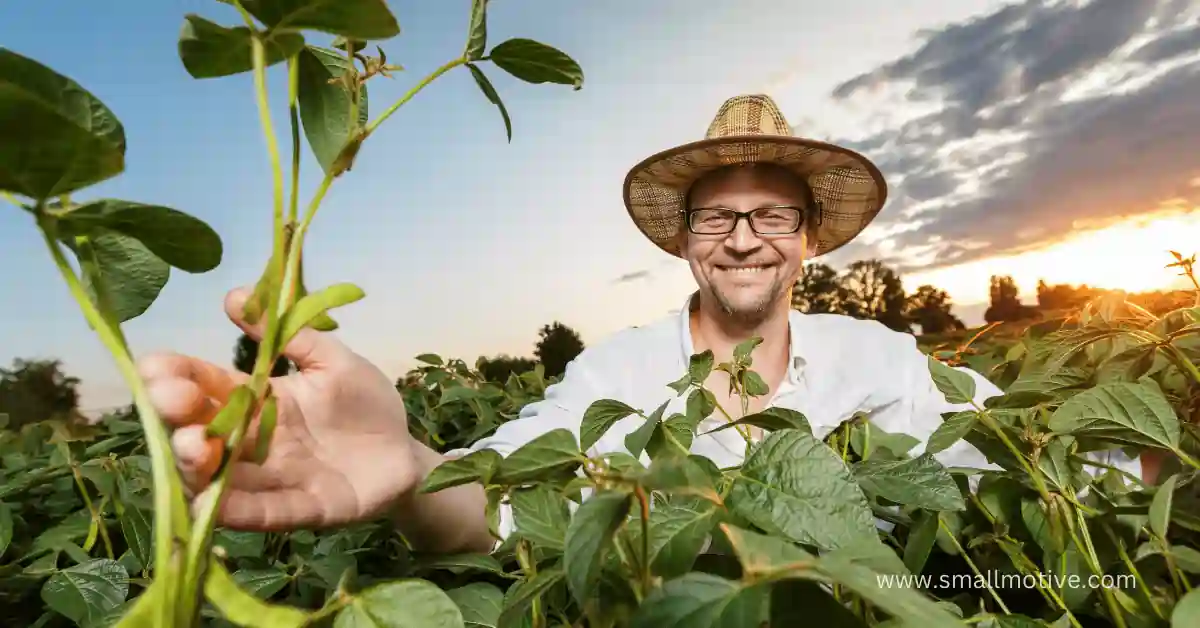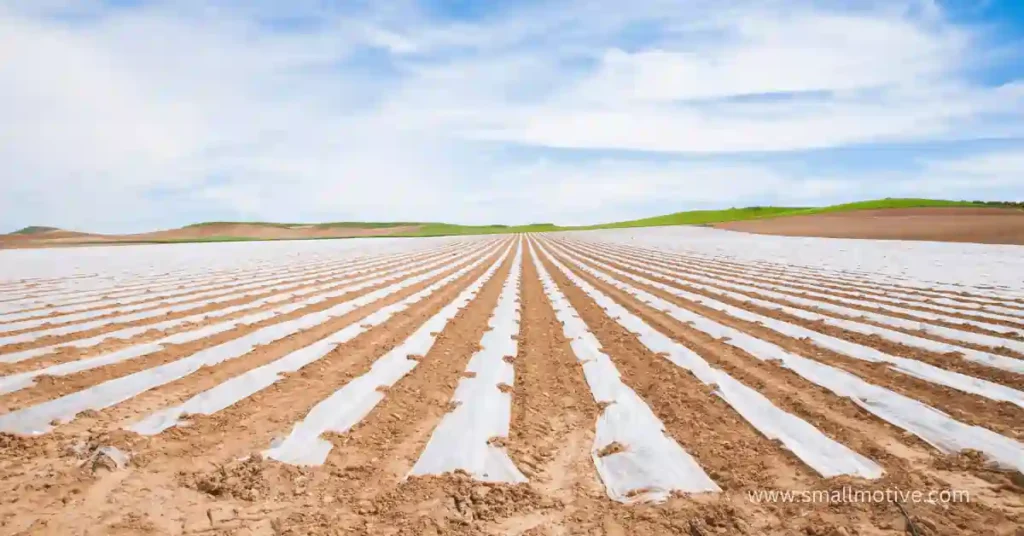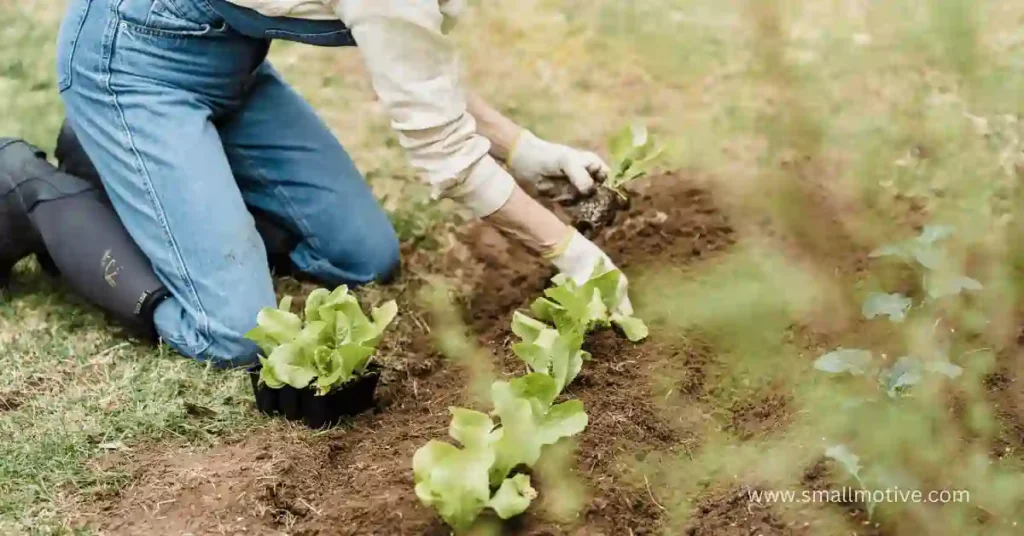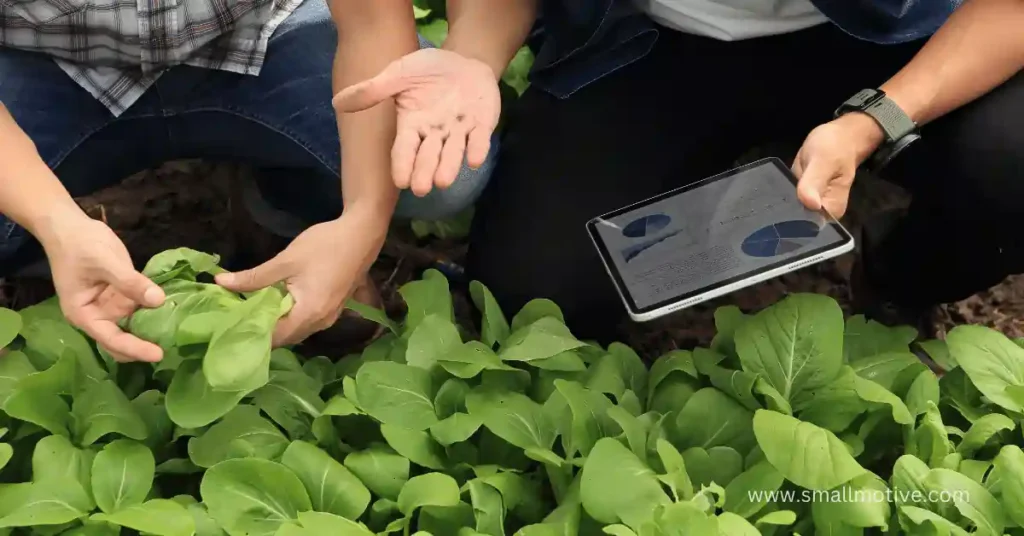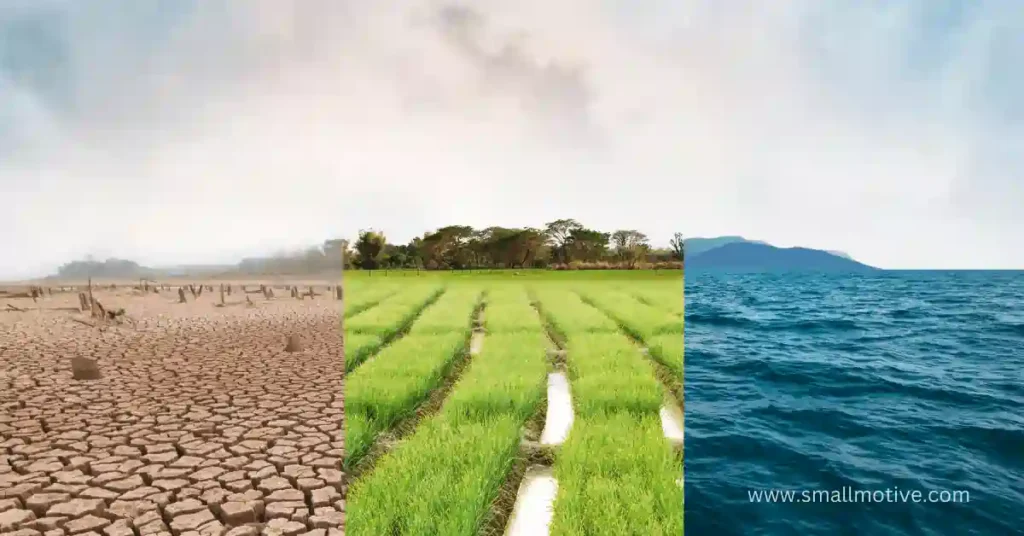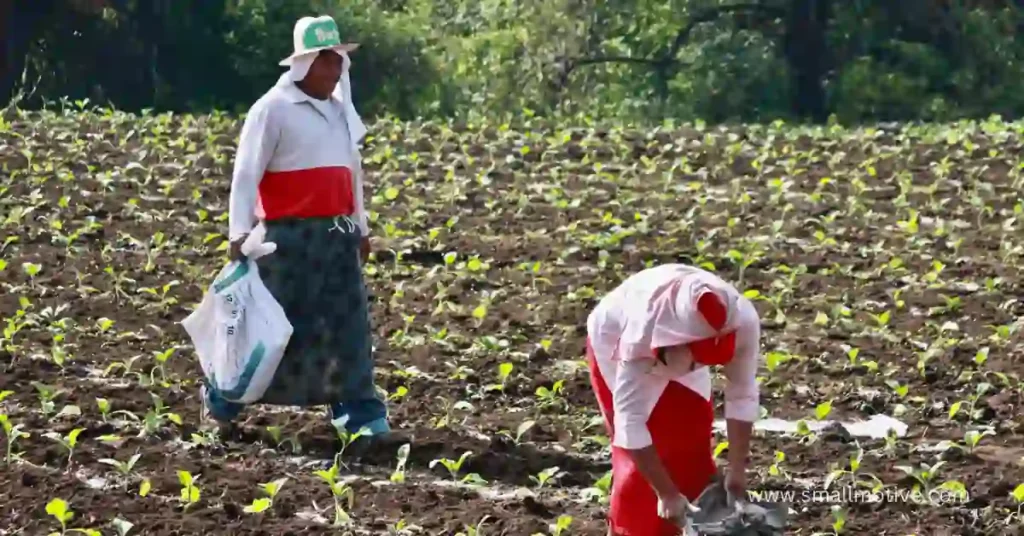In the realm of agriculture, new techniques are constantly emerging to address the challenges posed by a growing global population and the increasing demand for food. Strip cropping is a method that has gained recognition for its ecological and agronomic advantages. Strip cropping is not only a farming practice; it is also a sustainable solution that helps protect the environment, improve soil health, and enhance crop yields. In this article, we will delve into the intricacies of strip cropping, exploring its origins, methods, benefits, and its role in addressing contemporary agricultural and environmental concerns.
The Basics of Strip Cropping
What is Strip Cropping?
At its core, strip cropping is a farming practice that involves planting two or more different crops in alternating strips or bands across a field. These crop strips are strategically designed to maximize their synergistic benefits. The primary objective of strip cropping is to reduce soil erosion, increase biodiversity, and enhance the overall sustainability of agricultural operations.
The Purpose of Strip Cropping
Strip cropping is primarily used to combat soil erosion. By planting crops in strips perpendicular to the prevailing wind or water flow, the impact of erosive forces is significantly reduced. In addition to erosion control, strip cropping offers various agricultural and environmental benefits.
Environmental Benefits
Strip cropping serves as a powerful tool in preventing soil erosion, which is a major contributor to the degradation of arable land. Moreover, it mitigates the harmful effects of runoff, reducing the contamination of water bodies by sediments and agrochemicals. This, in turn, leads to improved water quality.
Agricultural Benefits
From an agricultural perspective, strip cropping has been shown to enhance crop yields. The practice promotes healthy soil by reducing nutrient loss and maintaining soil fertility. This ensures that the soil remains productive over the long term, benefiting farmers economically.
How Strip Cropping Works
Layout and Design
The layout of strip cropping is a critical aspect of its success. To achieve the desired results, the design of the strips should consider the natural topography and hydrology of the land. Contour strip cropping, for instance, involves planting strips perpendicular to the contours of the land. This technique helps to reduce water runoff.
Crop Selection
Careful selection of crops for strip cropping is essential. Compatibility in terms of growth patterns, nutrient requirements, and root structures is taken into consideration when selecting crops for each strip. This choice varies according to local conditions and farmers’ preferences.
Crop Rotation
Crop rotation plays a crucial role in strip cropping. Alternating crops in the strips not only helps improve the soil, but also disrupts the life cycles of pests and diseases, thereby reducing the need for chemical interventions.
Types of Strip Cropping
Strip cropping can take on various forms depending on the goals and the layout of the land. Let’s explore some of the common types:
Contour Strip Cropping
Contour strip cropping is practiced on hilly or sloping terrain. Crop strips run perpendicular to the contour lines, which helps to reduce the velocity of water flow and minimize erosion.
Field Border Strip Cropping
Field border strip cropping involves planting specific crops in strips along the borders of a field. This practice helps to control runoff and capture sediments and agrochemicals before they enter water bodies.
Buffer Strip Cropping
Buffer strip cropping is commonly used alongside water bodies, such as rivers and lakes. It acts as a protective barrier, preventing the runoff of nutrients and chemicals into aquatic ecosystems.
Alley Cropping
Alley cropping integrates trees or shrubs into strips, creating a multifunctional agricultural landscape. This approach enhances biodiversity and provides additional resources, such as fruits, timber, and firewood.
Advantages of Strip Cropping
Erosion Control
The most prominent advantage of strip cropping is its effective ability to control soil erosion. By interrupting the flow of water and wind, it minimizes the loss of topsoil and preserves the land’s productivity.
Improved Soil Health
Strip cropping helps maintain soil health by reducing nutrient leaching and promoting the retention of organic matter. This results in fertile soil that supports robust plant growth.
Biodiversity Promotion
The diversity of crops and the integration of trees in strip cropping systems promote biodiversity. This benefits local ecosystems by providing habitats and food sources for various species.
Enhanced Crop Yields
Studies have shown that strip cropping can lead to increased crop yields, primarily due to improved soil quality and reduced reliance on chemical inputs. Farmers benefit economically from this increased productivity.
Challenges and Concerns
While strip cropping offers numerous benefits, its successful implementation is not without challenges and concerns.
Implementation Challenges
Adopting strip cropping requires careful planning, sufficient resources, and a strong commitment. Farmers may encounter resistance to change or difficulties in adjusting their practices.
Crop Selection Challenges
Selecting compatible crops and effectively managing their growth in strips can be a complex task. Making poor crop selections can undermine the overall effectiveness of the system.
Maintenance and Management
Proper maintenance and management of strip cropping systems are essential for their long-term success. Neglecting these aspects can lead to diminished results.
The Role of Technology
Modern agriculture benefits from technological advancements, and strip cropping is no exception. Let’s explore how technology is transforming sustainable farming practices.
Modern Techniques in Strip Cropping
Recent innovations, such as precision planting equipment and automated irrigation systems, have streamlined the process of strip cropping. These technologies make it easier for farmers to implement and manage strip cropping systems.
Remote Sensing and GIS Applications
Remote sensing and Geographic Information Systems (GIS) are used to assess the effectiveness of strip cropping systems. They provide valuable data for monitoring crop health, erosion rates, and environmental impact.
Precision Agriculture
The principles of precision agriculture are integrated into strip cropping. Farmers can analyze data to make informed decisions about crop selection, planting patterns, and resource management.
Real-world Examples of Strip Cropping
To better understand the practical implications of strip cropping, let’s explore a couple of real-world examples.
Case Study 1: Strip Cropping in the Midwest
The American Midwest is known for its vast agricultural fields. In recent years, strip cropping has gained popularity among farmers in this region. By implementing contour strip cropping on hilly terrain, farmers have successfully reduced soil erosion and improved crop yields.
Case Study 2: Strip Cropping in Developing Nations
Strip cropping has also found relevance in developing nations where sustainable agriculture is crucial. Smallholder farmers in countries like India and Kenya have adopted strip cropping to combat soil degradation and improve food security.
Economic Aspects
Cost-Benefit Analysis
While the initial expenses of implementing strip cropping may appear overwhelming, a comprehensive cost-benefit analysis reveals the long-term economic benefits. The savings from reduced erosion and increased crop yields often outweigh the initial investments.
Government Incentives and Subsidies
Many governments recognize the benefits of sustainable farming practices and offer incentives and subsidies to encourage farmers to adopt strip cropping. These financial aids make agricultural operations more accessible to a broader range of farmers.
The Environmental Impact
Reducing Chemical Runoff
Strip cropping significantly reduces the amount of agrochemical runoff into water bodies. This is a crucial step in minimizing the contamination of rivers, lakes, and oceans.
Mitigating Climate Change
Strip cropping not only preserves the soil but also serves as a carbon sink. The practice of sequestering carbon mitigates climate change by reducing greenhouse gas emissions.
Wildlife Habitat Enhancement
The diversification of crops and the incorporation of trees in strip cropping systems create habitats for various wildlife species. This promotes biodiversity and sustains local ecosystems.
Comparison with Conventional Agriculture
Strip Cropping vs. Monoculture Farming
In contrast to conventional monoculture farming, strip cropping offers a more sustainable and environmentally friendly approach. It minimizes the negative impacts of monoculture, such as soil depletion and increased pesticide use.
Long-term Sustainability
The longevity of strip cropping is one of its most appealing features. By maintaining soil health and minimizing erosion, it offers long-term sustainability, ensuring that the land remains fertile for future generations.
Strip Cropping and Climate Change
Strip Cropping as a Climate Mitigation Strategy
With the growing concern over climate change, strip cropping has emerged as a valuable strategy for mitigating its effects. Its carbon sequestration capabilities make it an attractive option for reducing the carbon footprint of agriculture.
Carbon Sequestration
Strip cropping aids in carbon sequestration by capturing and storing carbon in the soil and plant biomass. This process helps offset carbon emissions and combat climate change.
Strip Cropping and Water Resources
Reducing Water Pollution
One of the critical environmental benefits of strip cropping is its role in reducing water pollution. By minimizing chemical runoff, it contributes to the overall health of water bodies.
Conserving Water Resources
Strip cropping also plays a role in water conservation by reducing water waste. The practice promotes efficient water use, which is essential in regions experiencing water scarcity.
Global Adoption and Barriers
Strip Cropping Worldwide
Strip cropping is not limited to any specific region or climate. It has been adopted in various parts of the world, from the plains of the United States to the arid landscapes of Africa. Its versatility makes it a viable option for farmers worldwide.
Socioeconomic and Cultural Barriers
While the benefits of strip cropping are clear, there are socioeconomic and cultural barriers that can hinder its adoption. These barriers include traditional farming practices, economic constraints, and limited access to resources.
Future Prospects and Research
Ongoing Research in Strip Cropping
Researchers continue to explore the potential of strip cropping in various contexts. Ongoing studies focus on optimizing strip cropping techniques, crop combinations, and conducting environmental impact assessments.
Innovations and Trends
Innovations in strip cropping are expected to continue, with advancements in technology and farming practices. Future trends may include improved crop selection tools and more accessible resources for farmers.
How to Implement Strip Cropping on Your Farm
Steps to Get Started
If you’re considering implementing strip cropping on your farm, here are some key steps to help you get started:
- Assess Your Land: Evaluate your land’s topography, soil quality, and potential for strip cropping.
- Choose the Right Crops: Select crops that are compatible and suitable for strip cropping in your region.
- Design Your Strips: Plan the layout of your strips, taking into account the natural contours of your land.
- Implement and Maintain: Follow best practices for planting, maintaining, and managing your strip cropping system.
- Monitor and Adapt: Continuously monitor the performance of your strip cropping system and make adjustments as needed.
Resources and Support
There are numerous resources and support networks available to assist farmers who are interested in strip cropping. Government agencies, agricultural extension services, and environmental organizations often provide guidance, financial incentives, and technical assistance.
Success Stories
To gain insight into the practical aspects of strip cropping, we conducted interviews with farmers who have successfully implemented this technique on their farms.
Farmer 1: John Anderson
John Anderson, a farmer from Iowa, shared his experience with strip cropping: “We’ve seen a remarkable improvement in soil erosion control and an increase in crop yields since we started strip cropping.” “It was a learning curve, but the benefits are worth it.”
Farmer 2: Amina Malik
Amina Malik, a smallholder farmer from Pakistan, highlighted the importance of strip cropping for her community: “Strip cropping has helped us combat soil degradation and improve our food security.” “It’s a sustainable way forward for us.”
The Road Ahead
In a world with increasing environmental challenges, the importance of sustainable agriculture cannot be overstated. Strip cropping offers a pathway to a more environmentally friendly and economically viable agricultural future.
FAQs
Q: How does strip cropping reduce soil erosion?
A: Strip cropping reduces soil erosion by creating barriers with deep-rooted crops that slow down the flow of water and wind, preventing soil from being washed or blown away.
Q: Can strip cropping increase crop yields?
A: Yes, strip cropping can lead to enhanced crop yields due to improved soil health and moisture retention.
Q: Are there any downsides to strip cropping?
A: The main challenge with strip cropping is the need for careful planning and maintenance. It can be more labor-intensive than conventional farming methods.
Q: Is strip cropping suitable for all types of crops?
A: While strip cropping is adaptable, it’s most effective when used with crops that have varying root structures, such as grains, grasses, and vegetables.
Q: Does strip cropping benefit the environment?
A: Absolutely. Strip cropping not only conserves soil and water but also promotes biodiversity and reduces the need for chemical pesticides.
Q: Can I combine strip cropping with other sustainable farming practices?
A: Yes, strip cropping can be integrated with crop rotation, no-till farming, and other sustainable techniques to maximize benefits.
Conclusion
Strip cropping is a farming practice that goes beyond simply planting crops. It signifies a commitment to preserving the environment and ensuring long-term agricultural sustainability. By mitigating soil erosion, improving soil health, promoting biodiversity, and enhancing crop yields, strip cropping stands as a beacon of hope in the realm of agriculture. Its potential to combat climate change, protect water resources, and support global food security makes it a practice that deserves serious consideration by farmers and policymakers alike.
Strip cropping is a testament to the power of innovation in agriculture, and it serves as a reminder that, in the face of ecological challenges, the land can thrive when treated with care and ingenuity.
